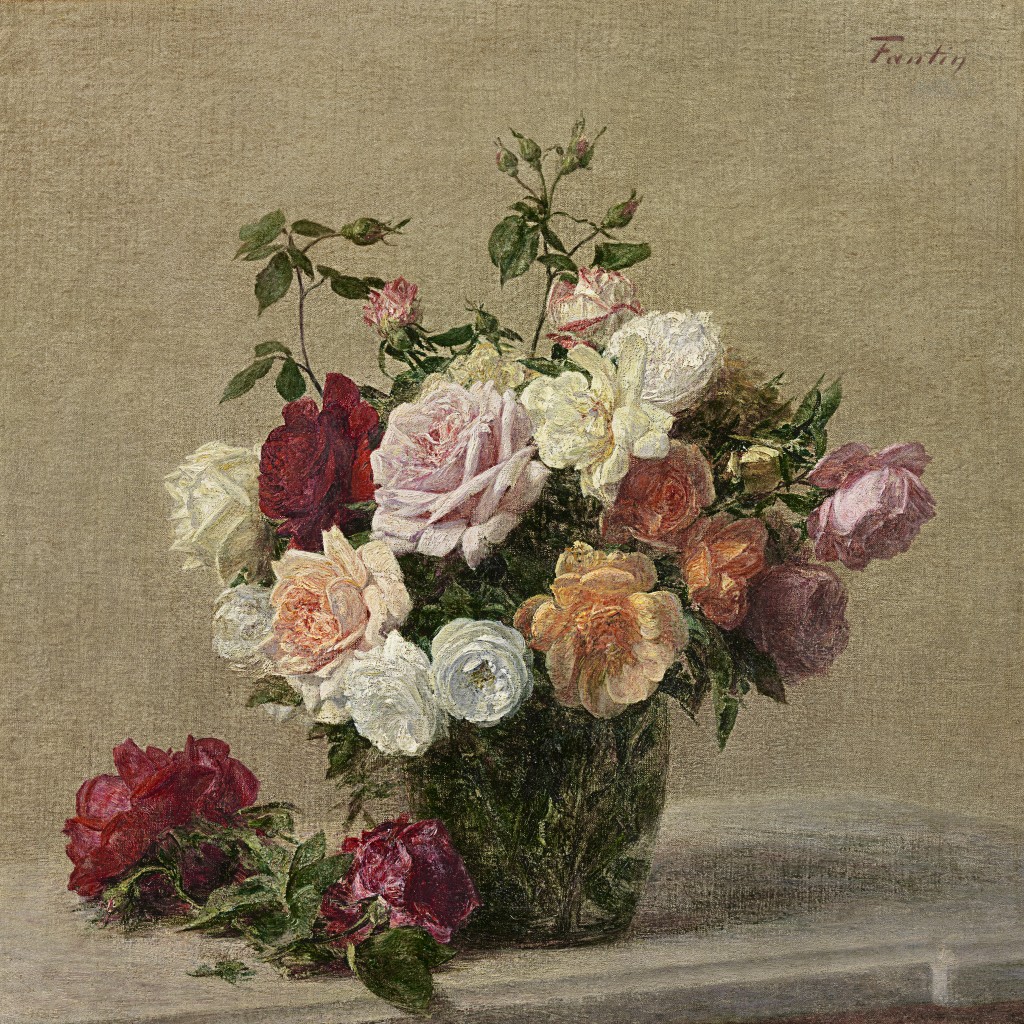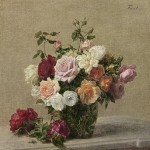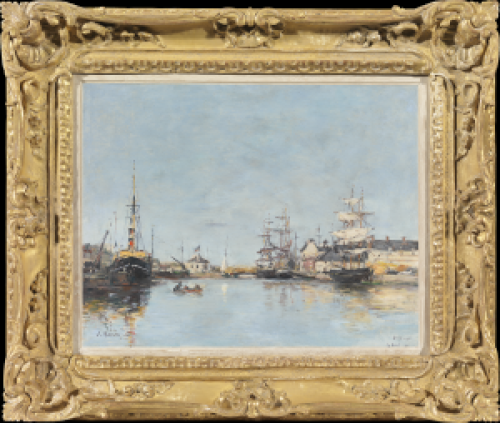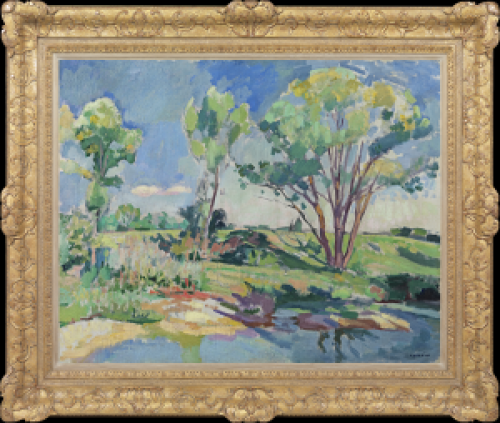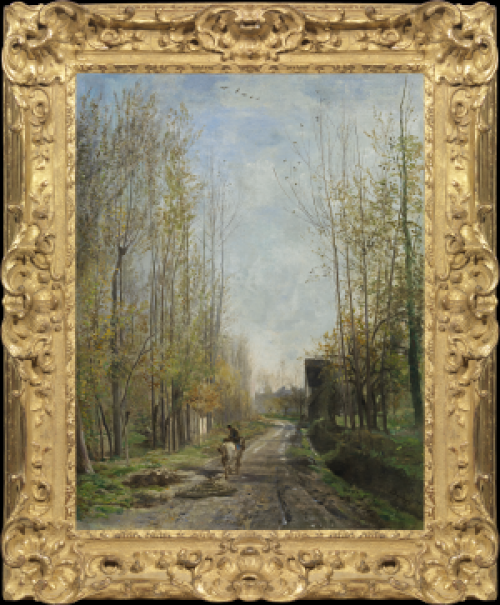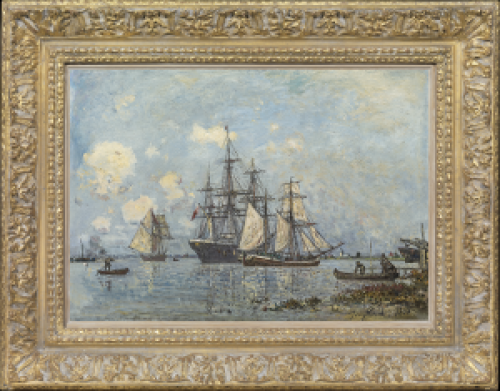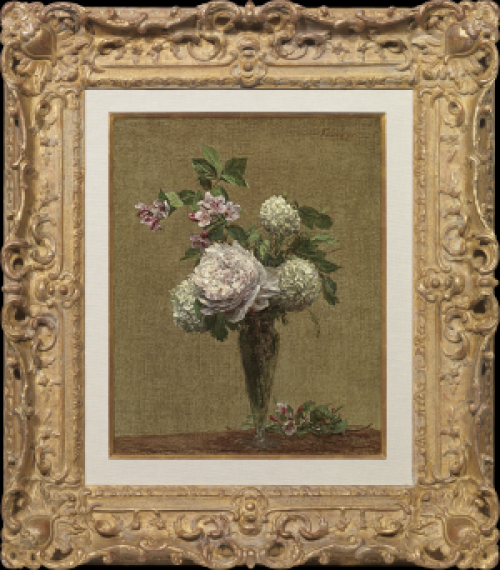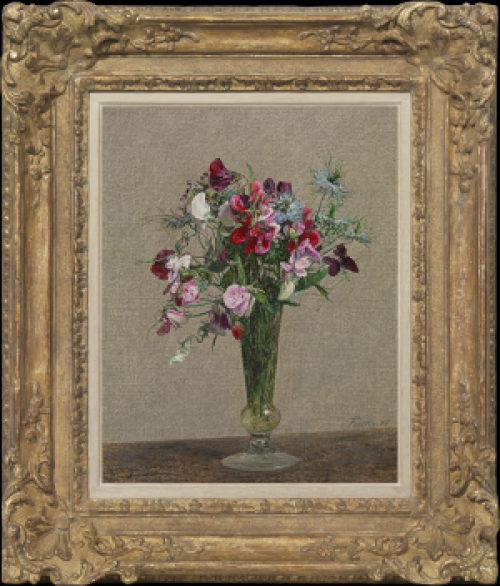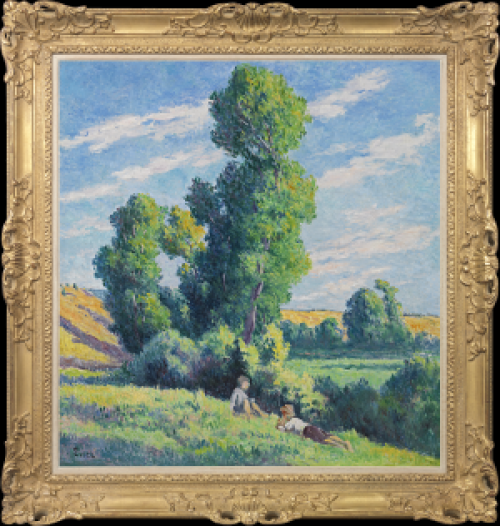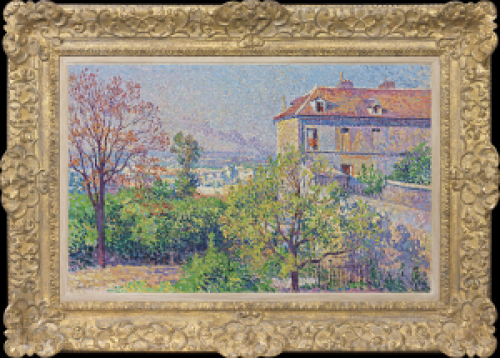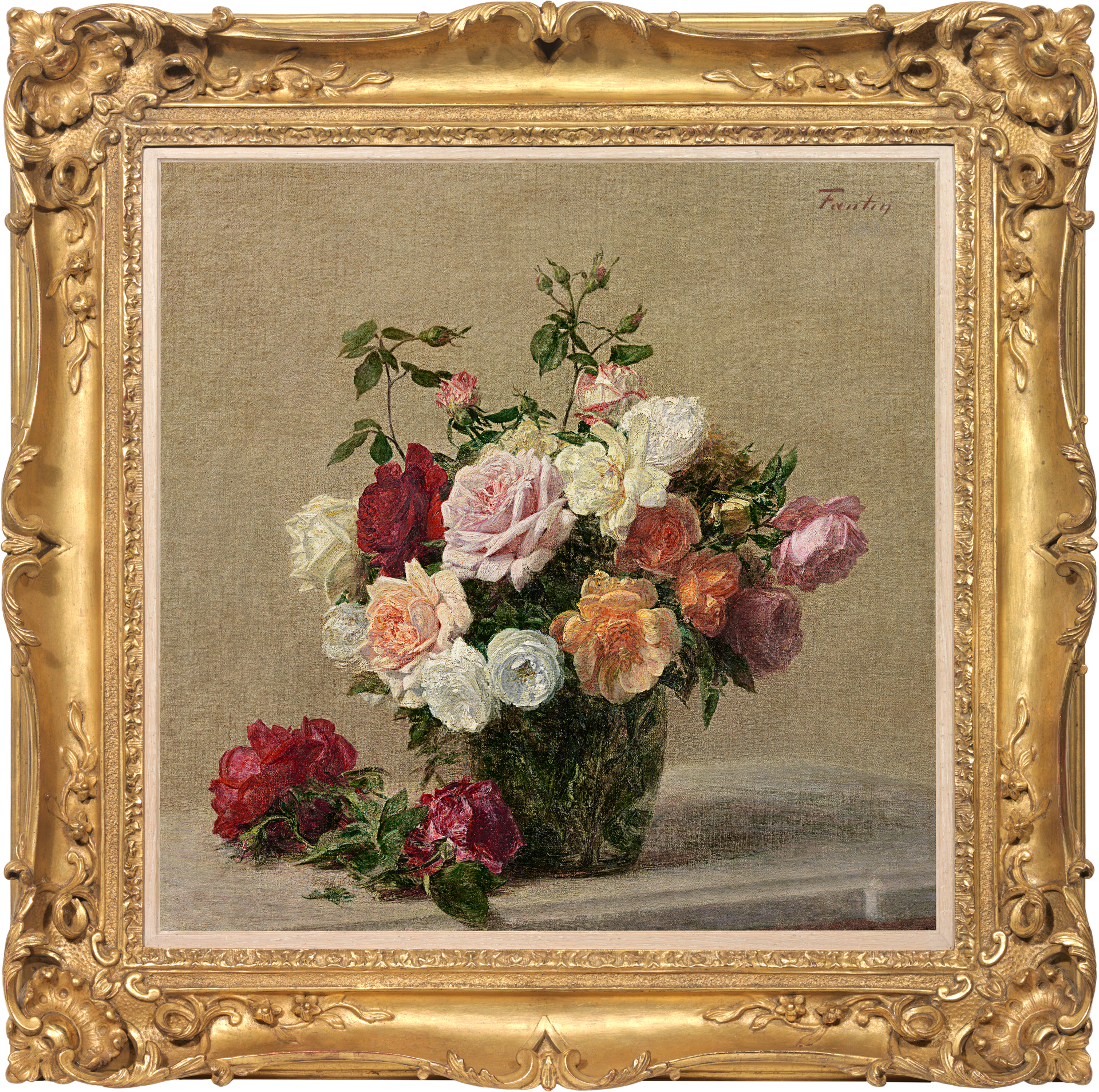HENRI FANTIN-LATOUR
Grenoble 1836 - 1904 Buré
Ref: CC 209
Roses dans une boule de verre
Signed upper right: Fantin
Oil on canvas: 22 ⅛ x 22 ⅛ in / 56.2 x 56.2 cm
Frame size: 30 x 30 in / 76.2 x 76.2 cm
Painted in 1885
Provenance:
Mrs Edwin Edwards (c.1833-1907), London
Abel Buckley, Co. Tipperary;
Christie’s London, 25th January 1924, lot 15;
where acquired by Arthur Tooth & Sons, London;
from which acquired in January 1924 by Baron Bruno Schroder (1867-1940);
by descent
Exhibited:
London, Royal Academy of Arts, The One Hundred and Eighteenth Exhibition of the Royal Academy of Arts, 1886, p.32, no.860
London, The New Gallery, Summer Exhibition, May 1894, p.11, no.101
Literature:
Mme Fantin-Latour, Catalogue de l’Oeuvre Complet de Fantin-Latour, Paris 1911, p.125, no.1213
To be included in the forthcoming catalogue raisonné of the work of Henri Fantin-Latour currently being prepared by Messrs Brame and Lorenceau
Henri Fantin-Latour was renowned for sensitive flower still lifes, portraits and romantic figure subjects which explored myth, history and opera. He was born in Grenoble in 1836, the son of the portrait painter Jean-Théodore Fantin-Latour and his Russian wife Helène de Naidenoff. He studied with his father from 1846 and with Horace Lecoq de Boisbaudran at the Petite Ecole de Dessin in Paris from 1850 to 1856, copying Old Masters. For some months in 1861 he studied with Gustave Courbet, but eschewed his Realism for a gentler style.
In 1858 Fantin met James McNeill Whistler and was encouraged by him to make several trips to England (1859, 1861, 1864, 1881), learning to etch from Whistler’s brother-in-law Seymour Haden. Fantin sold some of his first flower still lives through his friends Ruth and Edwin Edwards, who popularized them in England. A friendship with Edouard Manet led Fantin to exhibit at the Salon des Refusés in 1863, but he refused to take part in the first Impressionist show in 1874. He exhibited at the Salon from 1861 to 1899.
Like the Impressionists, Fantin was interested in contemporary life and from 1864 exhibited group portraits of the artistic and intellectual circles in which he moved. Edouard Manet and Charles Baudelaire, for example, are depicted in Homage to Delacroix, 1864 (Musée d’Orsay, Paris). The figures are genially interlinked, but occupy their own contemplative psychological space. The supremely elegant single portrait of Edouard Manet, 1867 (Art Institute of Chicago) breathes penetrating intelligence but also retains the subject’s mystery.
Although Fantin’s brushwork was painterly and sensuous in approach, he disliked painting en plein air, instead studying his flowers in the studio, against a plain background. In 1876 he married a fellow artist, Victoria Dubourg (1840-1926). The couple spent summers at Victoria’s family home at Buré in Lower Normandy, drawing inspiration from its abundant garden.
Parallel to Fantin’s poetic but precise observation of flowers are his imaginative figure pieces, painted and lithographed in a soft manner, full of chiaroscuro. He took themes from the Romantic music of Schumann and Berlioz and particularly the monumental, mythic operas of Wagner, in works such as Scène première du Rheingold, 1888 (Kunsthalle, Hamburg), inspired by his 1876 visit to Bayreuth. Fantin-Latour died at Buré in 1904.
The work of Henri Fantin-Latour is represented in the Louvre, Paris; the Musée d’Orsay, Paris; the National Gallery, London; the Royal Collection, London; the Thyssen-Bornemisza Museum, Madrid; the Metropolitan Museum of Art, New York; the Museum of Fine Arts, Boston; Philadelphia Museum of Art and the National Gallery of Art, Washington DC.


